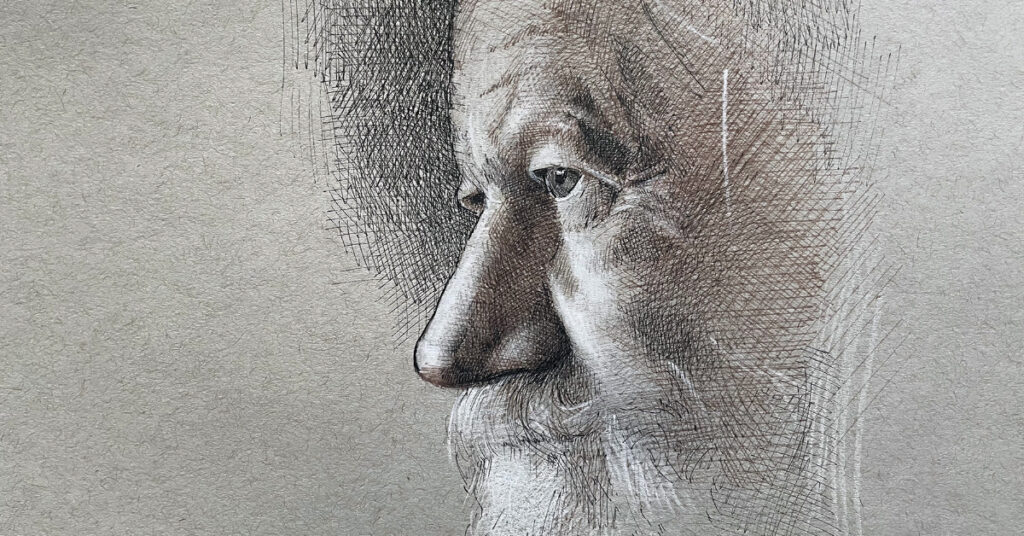Beginner Oil: Paintbrush care


The two most important aspects of taking proper care of oil painting paintbrushes are storage and cleaning.
by Bob Bahr
| An example of a bright brush. Photo courtesy Loew-Cornell. |
Storing Brushes
Always store your brushes flat. It’s best if they are stored so the hairs don’t touch other brushes. Never let paintbrushes sit in water or solvent, even while painting. The liquid saturates the handle inside the ferrule, causing the wood to swell, resulting in the handle’s paint cracking and a resulting loosening of the ferrule.
How to Clean Your Paintbrush
It is extremely important to clean your brush as soon as you finish a painting session. Follow the steps below:
Wipe off excess paint using a soft cloth. Old t-shirts work well.
If you work in oil, clean the brush in a brush-cleaner, which is a small receptacle with a tight-fitting lid and a wire coil in its bottom. The receptacle should be half-filled with turpentine, mineral spirits, or another solvent designed for use with oils. Gently rub the brush hairs on the coil. Wipe the brush on a soft cloth.
| An example of a filbert brush. Photo courtesy Loew-Cornell. |
Both oil-paint brushes and watermedia brushes are cleaned in the same way at this stage:
Rinse in lukewarm–not hot–water. Always rinse a brush with the bristles pointing down. Move brush hairs in their natural direction–do not scrub.
Apply some brush-cleaner. There are several brands on the market, and some artists use gentle Ivory dishwashing soap, but “The Masters” brand brush-cleaner is very popular because you can open the lid of the tub and stroke the hairs on the cake-like cleaner instead of working detergent into the hairs with your fingers or palm. There’s no waste and its solid consistency makes it spillproof.
| An example of a round brush. Photo courtesy Loew-Cornell. |
Make sure you thoroughly clean the hairs near the ferrule (the metal band at the base of the hair that holds the hair onto the handle.) This is important because even a small amount of paint left near the ferrule will allow additional paint to accumulate there, with the result being badly splayed bristles and a ruined brush.
Lather and rinse the brush, repeating as necessary until the water is clear.
Remove as much water as possible by shaking the brush rather than wiping it.
If the brush is for watermedia, apply a bit of the soap to the brush (do not rinse), form the hairs in the desired shape, and let the brush dry flat. If the brush is for oils, dip the hair in pure linseed or extra virgin olive oil, reshape, and then let the brush dry flat.
 |
| “The Masters” brand brush-cleaner is a popular choice for oil painting artists. |
Also:
If the hairs of your brush dry bent, work in some water-soluble mucilage and form the brush in the shape you desire. The mucilage will wash out easily with water the next time you use it and the brush will be ready for painting. If the mucilage isn’t enough to make the hairs stay in the position you prefer, add the mucilage and tie up the hairs in the shape desired with thread or fishing line and let it dry. Shirley Miller, the director of education and public relations for brush manufacturer Loew-Cornell, offers another solution. “For synthetic brushes, boil a cup of water in the microwave, let the water settle, then dip the brush into the water–up to the middle of the ferrule–for a slow count of three,” she says. “Reshape the brush head and allow it dry.”
If you somehow manage to let paint dry on your brush, try soaking it in fabric softener. It may free up the bristles. Miller says you may want to simply keep the damaged brush for special techniques–“It is very hard to reconstitute a damaged brush,” she says. “You may get the paint out of it, but the various home remedies will generally damage the brush hair.”





My mom has a really nice oil painting that has a lot of damage to it from getting scratches. She would really like to get some help restoring it from a professional. It was interesting to learn about how the brushes should be rinsed till the water is clear, and soap can be used when used for water media. https://oilpaintingdoctor.com/damaged-oil-painting-restoration